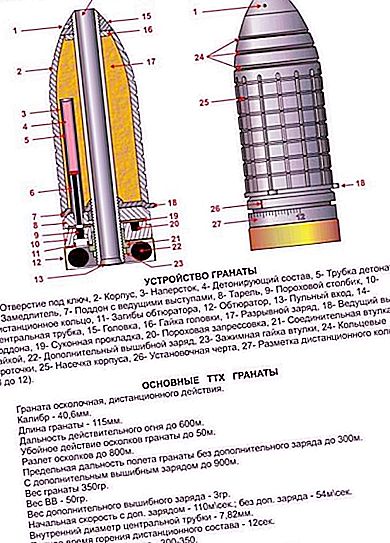Unlike other states, the military in Russia until 1916 did not use grenades. The situation began to change in 1913, when the Russian general came across military instructions to German soldiers about the rules for operating a rifle grenade. Soon, newspapers published information about a similar product created by the English designer Martin Hale. While in Russia it was decided which agency or department to entrust the design of this new ammunition for infantry, the First World War began. Already the first positional battles showed that without rifle and hand grenades can not do. After a long bureaucratic red tape, the development and supply of grenades was entrusted to the Main Artillery Directorate (GAU). Soon, the first cast-iron grenade and a 16-line mortar were ready for firing at distances up to 320 meters.
Soviet gunsmiths did not stop there and design work continued. One of the options for such weapons was the M.G.Dyakonov rifle grenade launcher. To shoot the ammunition, a rifled mortar was used, attached to the barrel of the Mosin rifle of 1891.
Information about the history of creation, technical specifications and the principle of operation of the Dyakonov grenade launcher can be found in this article.
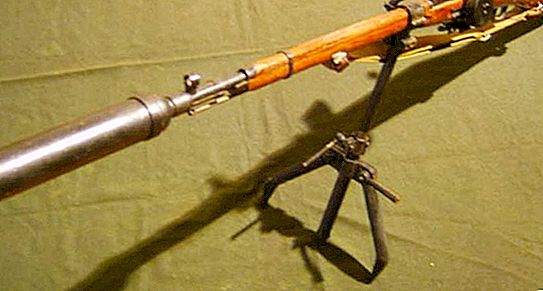
Acquaintance
The Dyakonov grenade launcher is a gun adapted for use from a closed position. With the help of fragmentation grenades fired from a grenade launcher, the living force of the enemy is destroyed, the place of deployment of which became equipped firing points and field fortifications. Since these places are inaccessible to rifle units, fire from which is conducted along a flat trajectory, the enemy can be eliminated using the Dyakonov grenade launcher. Also lightly armored targets are subject to destruction. In this case, anti-tank grenades are used. Dyakonov’s gun grenade launcher and firing from it are intended not only for the physical destruction of the enemy. The gun is also used as a means for warning, signaling and lighting.
About the history of creation
The idea of equipping infantry troops with grenade launchers arose in 1913. The Russian command could not decide which of the departments, engineering or artillery, should be engaged in the creation of such weapons. In 1914, this task was assigned to the Main Art Administration. In the same year, a technician A. A. Karnaukhov, an electrician S. P. Pavlovsky, and an engineer V. B. Segal created a 16-line mortar. However, its firing range left much to be desired and work on grenade launchers continued. In March 1916, a new product of the Dyakonov system was demonstrated at the gun range of the Officers Rifle School. The grenade launcher and firing from it were well evaluated by the expert commission. Moreover, it was decided to adopt the grenade developed by Dyakonov and a 40.5-mm mortar, the barrel of which was a seamless steel tube. However, they did not manage to establish their serial production, since in 1918 the "demobilization of industry" took place. Two years later, the Dyakonov grenade launcher (a photo of the gun is presented in the article) was sent to undergo repeated tests. In order to increase the firing range, the ammunition was modernized. In February 1928, the Revolutionary Military Council of the USSR decided to accept the Dyakonov grenade launcher into service with the Red Army.
About production
In 1929, the first order for the manufacture of grenades was received. To grenade launchers, 560 thousand of ammunition were released. The cost of one unit was 9 rubles. According to experts, the first batch cost the state 5 million rubles.
About design
The Dyakonov grenade launcher was a muzzle-loading system. This product was also called a mortar, which, along with a bipod, a bayonet, and a square protractor, equipped with a 7.62 mm rifle. The design of the mortar had the following details:
The body, which is represented directly by the rifled barrel. The available three rifling was intended for the leading protrusions of the grenade.
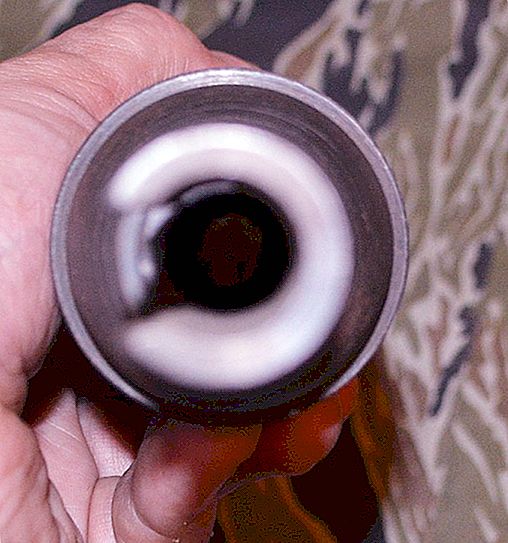
- A cup.
- Neck. This element was equipped with a special figured neckline, thanks to which the cup could be attached to the barrel like a bayonet.
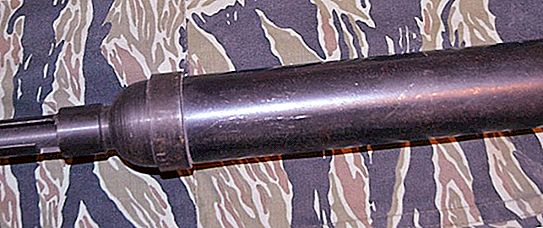
The grenade launcher used a threaded connection to fasten parts. In an effort to give the rifle stability during operation at various angles, it was equipped with bipods. When a grenade launcher was installed, the legs of the bipod were stuck with sharp ends into a hard surface. A clip was attached to the bipod rack and a rifle unit was put into it. It was possible to fasten the clip with a clip at various heights. Using a protractor-quadrant, a gun grenade launcher was guided. For mounting the goniometer, a special clamp was used, the left side of which served as a place for the quadrant box, and the right side - the goniometer and sighting line. Using a quadrant, the elevation angle was verified when aiming vertically, and the protractor in the horizontal plane. In 1932, a special manual was published describing the design of the Dyakonov grenade launcher. The manual also contained information on the characteristics and combat capabilities of the ammunition for the guns of this system, the rules for their storage and operation.
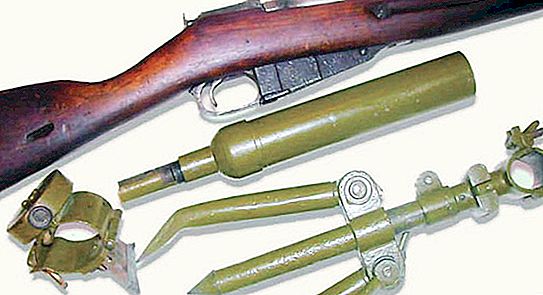
About gun maintenance
The combat crew of a gun grenade launcher is represented by two fighters: a gunner and a loader. The task of the gunner is to transfer and install the gun, aim at the target and produce a shot, loading, to transfer the combat kit to the Dyakonov grenade launcher. The number of grenades produced in one calculation was up to 16 units. The loader also helped the gunner set and aim the mortar on the target, mount the remote tube and equip the gun with a shell.
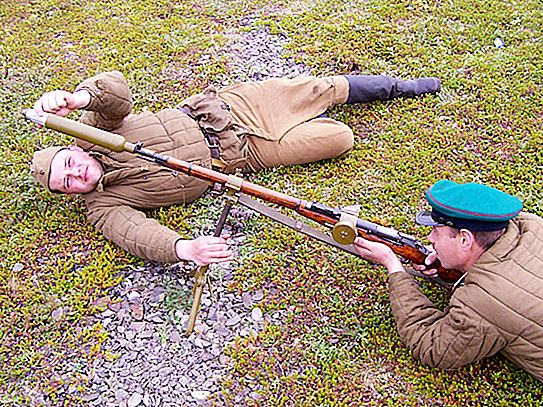
Due to the fact that the shooting was accompanied by a very tangible impact, it was not recommended to use the shoulder as a support for the rifle stock. Otherwise, the fighter could remain with a fragmented collarbone. Therefore, the rifle rested on the ground, which previously dug a hole. During the testing of the weapon, it was noticed that due to the strong recoil, the butt could crack if stone or frozen ground were used as a support for it. Therefore, in winter, in order to prevent damage to the stock, a special pillow was placed under it. During loading, the shutter must be left in the open position. This measure prevented unplanned shooting.
About the performance characteristics
- The weapon of the Dyakonov system belongs to the type of gun grenade launchers.
- Country of origin - USSR.
- The grenade launcher was operated by the Red Army from 1928 to 1945.
- In a complete assembly (with bipods, a rifle and a mortar), a grenade launcher weighs up to 8.2 kg.
- The weight of the mortar was 1.3 kg.
- The barrel is equipped with three rifling with a pitch of 672 mm.
- The battle crew consists of two people.
- The aiming range varies from 150 to 850 m.
- Shooting from a grenade launcher ensures that the target is hit at a distance of up to 300 m. With the presence of an additional charge, the distance increased to 850 m.
- Within one minute, 5 to 8 rounds can be fired from this gun.
Operating principle
Dyakonov’s grenade launcher was used to shoot rifle grenades. This ammunition is a small 370 gram shell. Explosive is contained in a steel case, in the lower part of which there is a pallet. The outer part of the body by means of grooves was divided into several separate squares. Thanks to this design, rifle elements were more easily formed during rupture of a gun grenade. A central tube was placed along this projectile along which the bullet passed. The inside of the case has become a place for a bursting charge, represented by a 50 gram explosive (BB). Remote tubes were attached to the central tubes from the end, thanks to which grenades could explode above targets located at different distances from the shooter. This product contained a special remote disc with divisions.
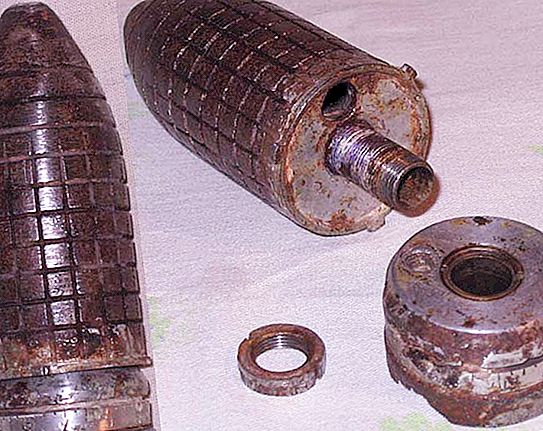
By turning it, grenades were set to break. To make the firing range greater, the designers provided the ammunition with an additional knockout charge. It was represented by smokeless powder weighing 2.5 g. It contained an additional charge in a silk bag, which was attached to the bottom of a gun grenade. During the shot, powder gases began to put pressure on the pallet, increasing the range of the gun grenade. So that the ammunition did not damp, it was covered with a special hermetic cap. According to experts, the Dyakonov system rifle grenade launcher is quite suitable for ordinary combat rifle cartridges.
The performance characteristics of the grenade
- The ammunition of the Diaconov system, 40.6 mm caliber and 11.7 cm long, weighed no more than 360 g.
- The mass of the combat charge was 50 g.
- During the grenade rupture, 350 pieces were formed.
- The radius of the lethal effect of the projectile reached 350 m.
- Grenades were moving toward the target at a speed of 54 m / s. With additional charges for one second they covered 110 m.
About the disadvantages
According to military experts, with the introduction of the Dyakonov system grenade launcher, the Red Army became the owners of a weapon that was quite effective in the First World War. Mortyrs are most effective for positional fights. According to experts, these grenade launchers are practically useless for a "mobile" war. Grenades and grenade launchers Dyakonova could be considered ideal means only in 1917. In 1928 they were already obsolete, and by the beginning of the Great Patriotic War they were cardinally obsolete. The disadvantage of the system was too complicated preparation:
- Before firing a projectile with a grenade thrower, the distance to the target was estimated by eye.
- Further, from memory or with the help of a special table, the gunner should determine in what position the sight should be in position at one or another distance.
- Then it was necessary to calculate how long it would take for the remote tube to burn. In this case, the grenade was supposed to hit the target with the maximum number of fragments. This is possible if it is torn directly above the target itself.
- Insert the grenade into the barrel.
The preparation was too complicated, which negatively affected the rate of fire.

